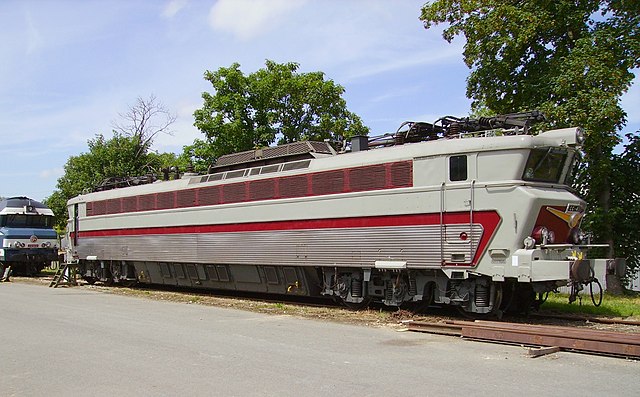The SNCF CC 40100 was a French class of quad-voltage 4,340 kW (5,820 hp) electric locomotives. They were intended for high-performance passenger services on the Trans Europ Express (TEE) routes of the 1960s and 1970s. This non-stop international working required them to support the electrical standards of several networks. They are significant for combining three innovations in locomotive design: quad-voltage working, three-axle monomotor bogies and the new 'Nez Cassé' body style of French locomotives.
CC 40110, now preserved
CC 40103 at the head of TEE L'Oiseau Bleu, at Brussels Midi, 1979
Driver's cab
Side profile. Note the outline of the plated-over side window
The Trans Europ Express, or Trans-Europe Express (TEE), was an international first-class railway service in western and central Europe that was founded in 1957 and ceased in 1995. At the height of its operations, in 1974, the TEE network comprised 45 trains, connecting 130 different cities, from Spain in the west to Austria in the east, and from Denmark to Southern Italy.
Swiss TEE trainset capable of operating at four different voltages
German DB Class VT 11.5 diesel trainset that was used in TEE service until 1972 at München Hauptbahnhof in 1970
An SNCF CC 40100 with the Brussels–Paris L'Oiseau Bleu TEE in 1979. By the 1970s most TEEs were locomotive-hauled, rather than self-propelled trainsets.
TEE in the DB Museum







